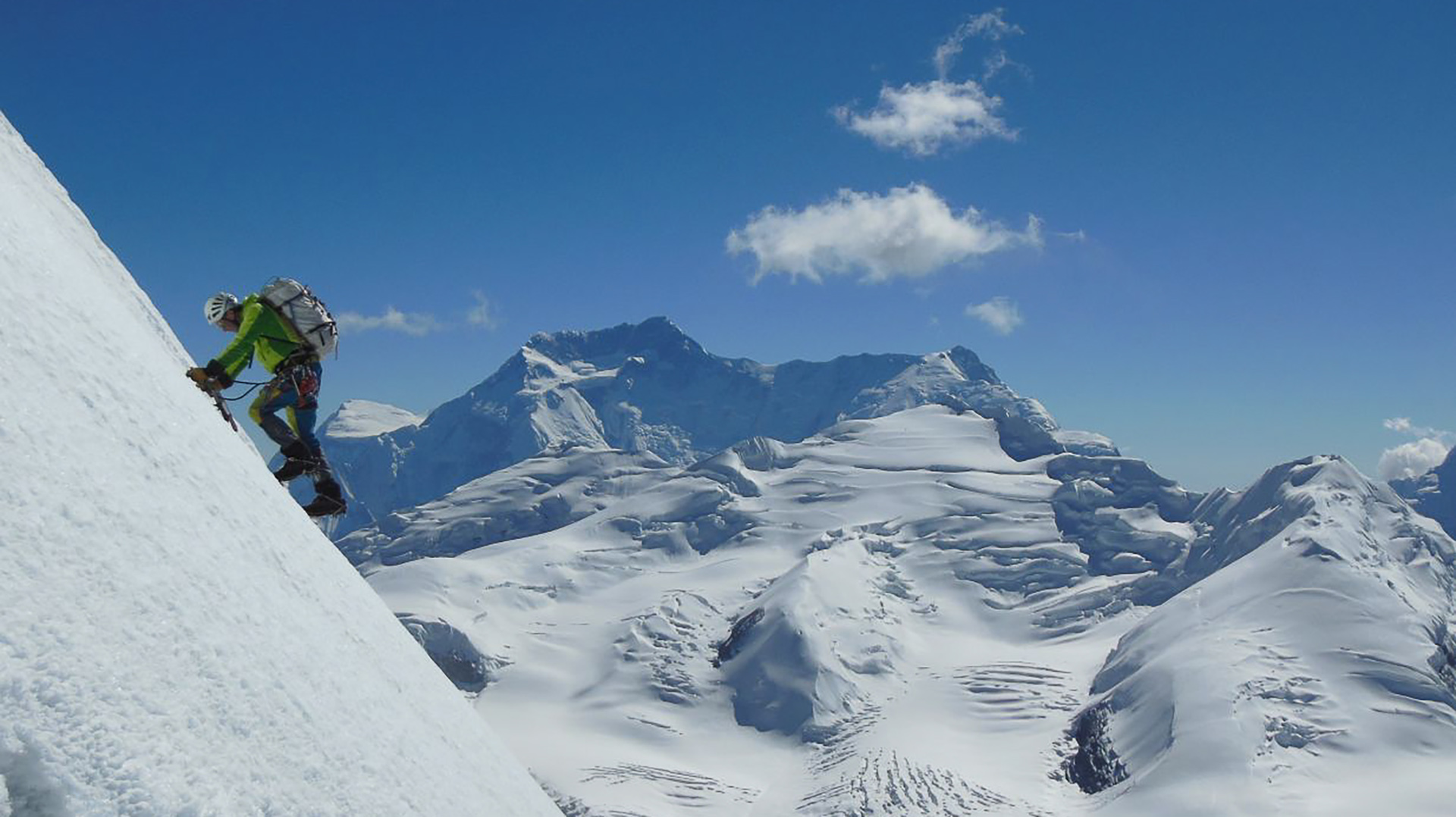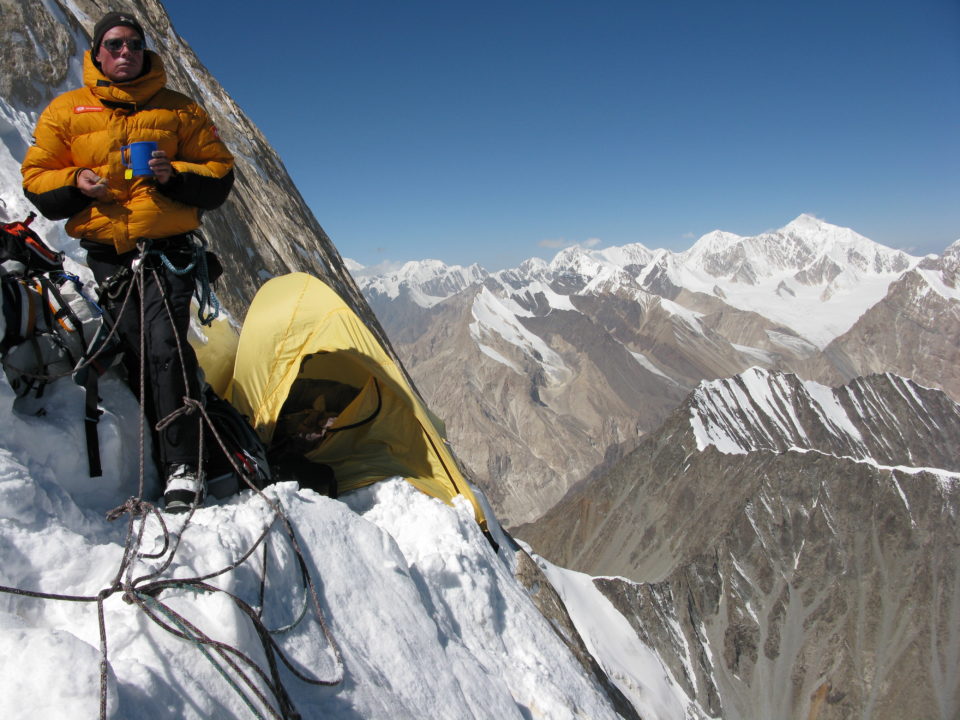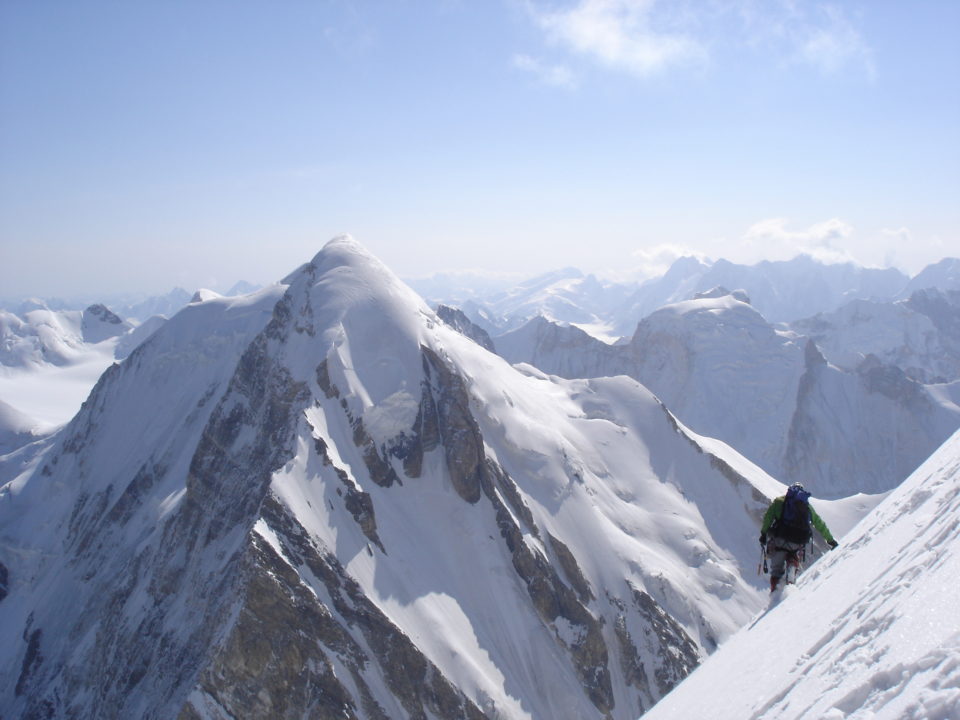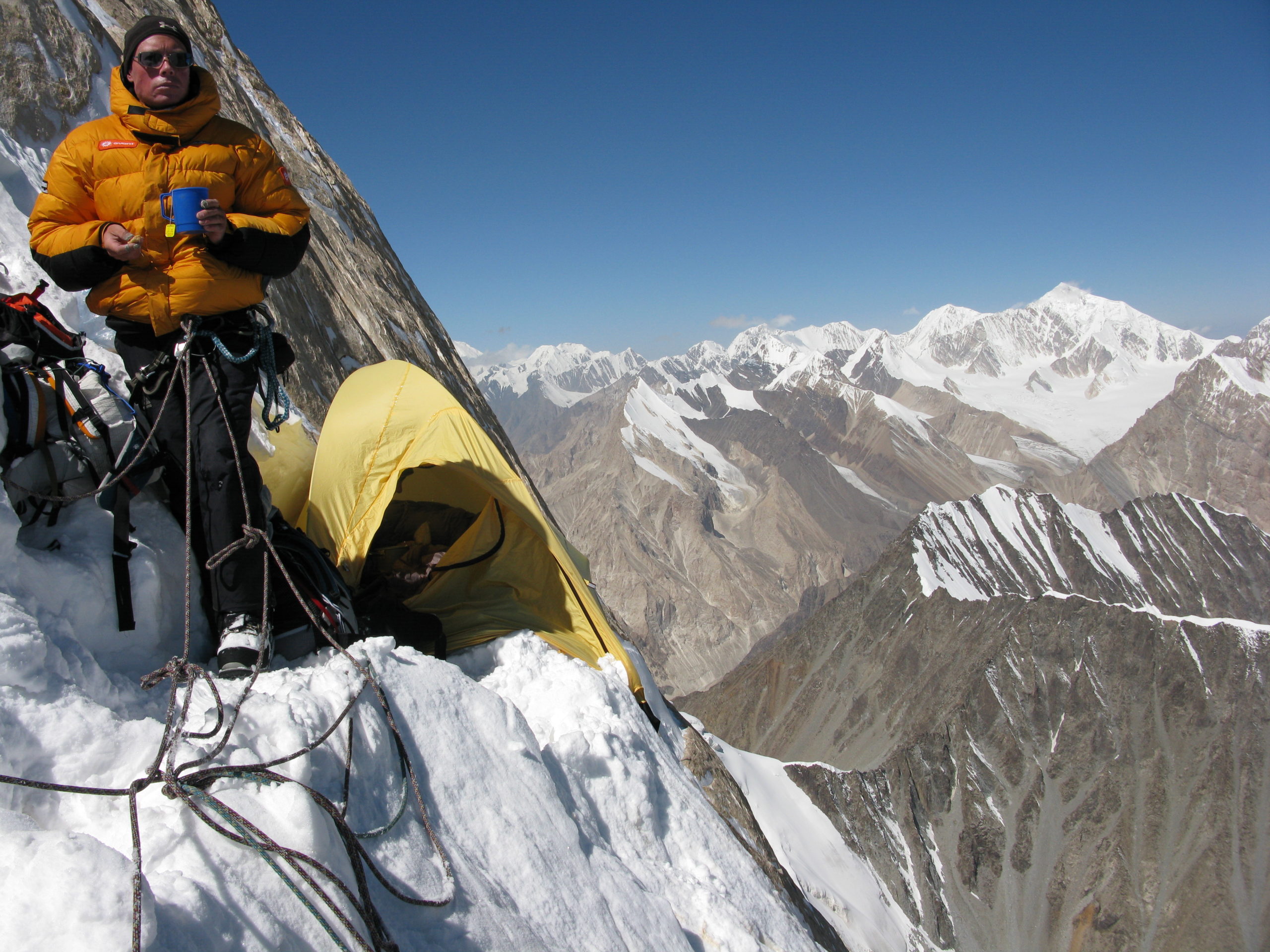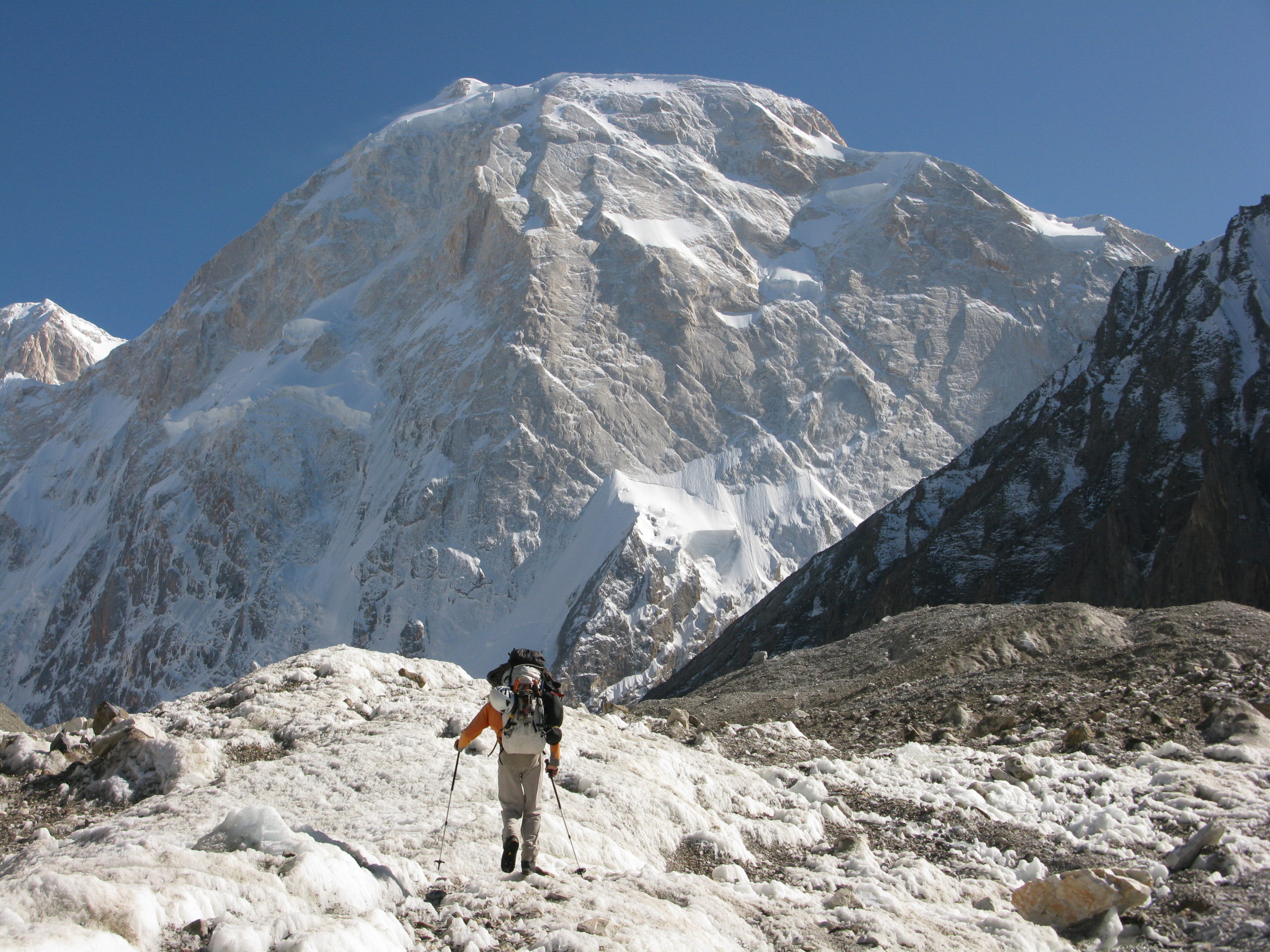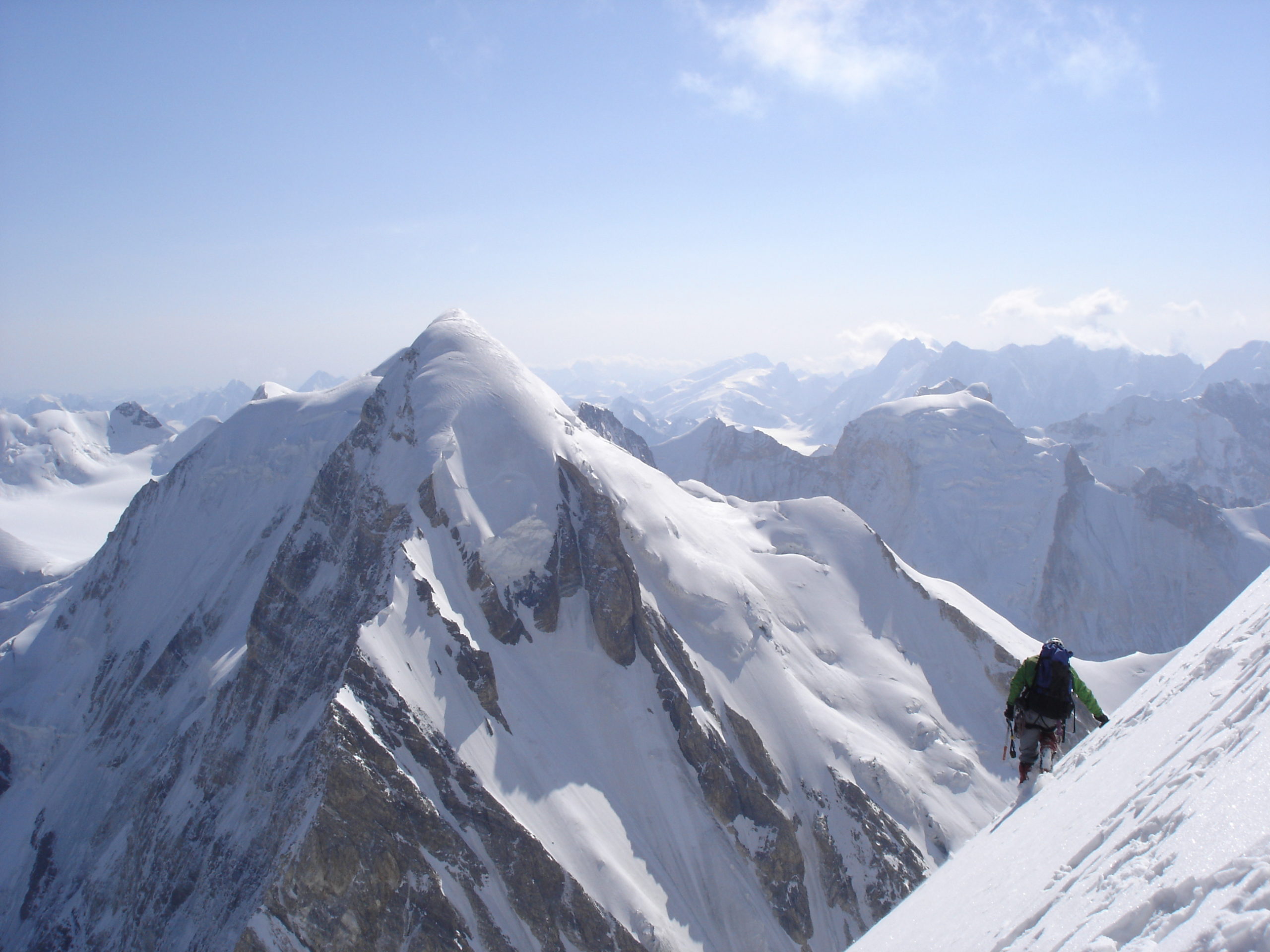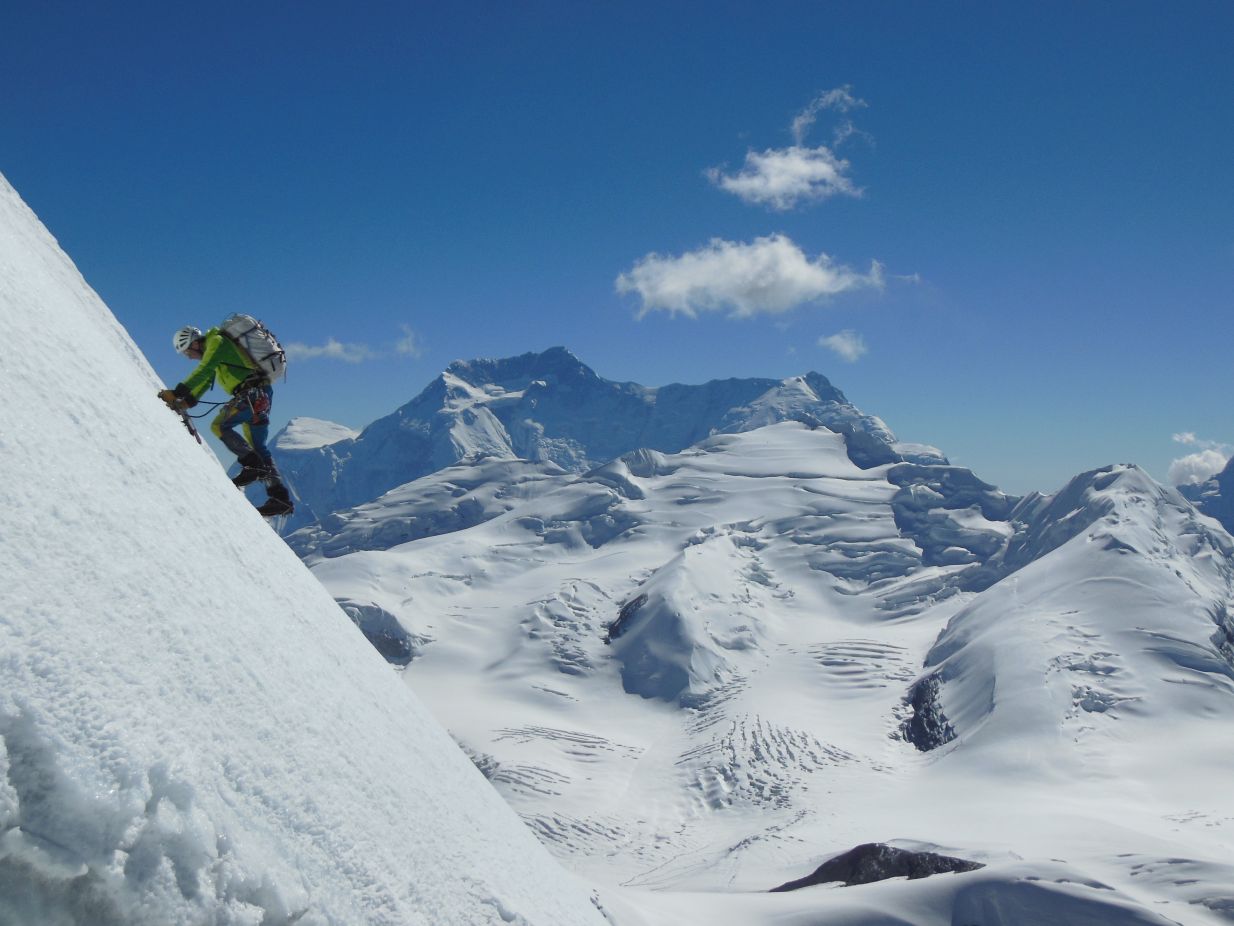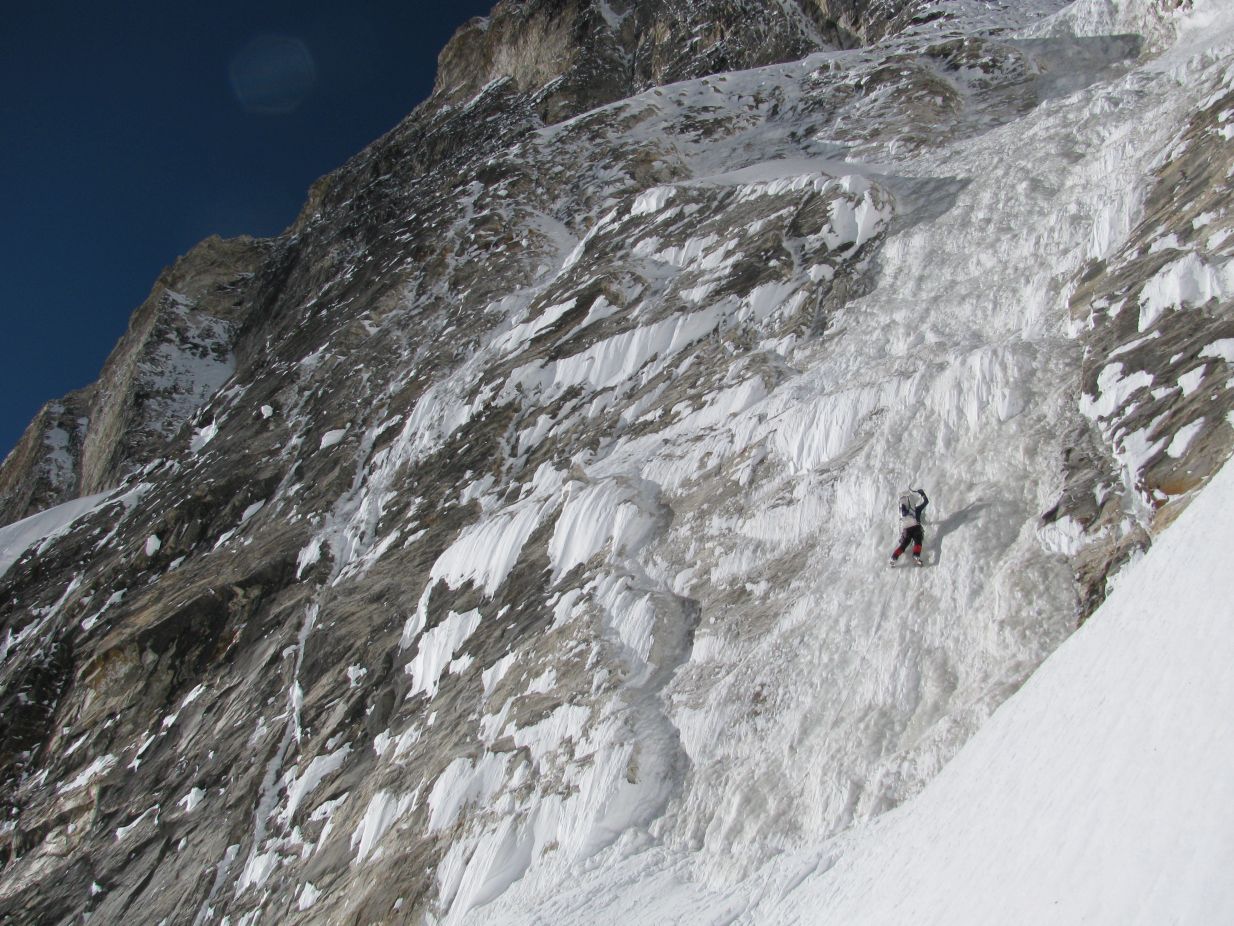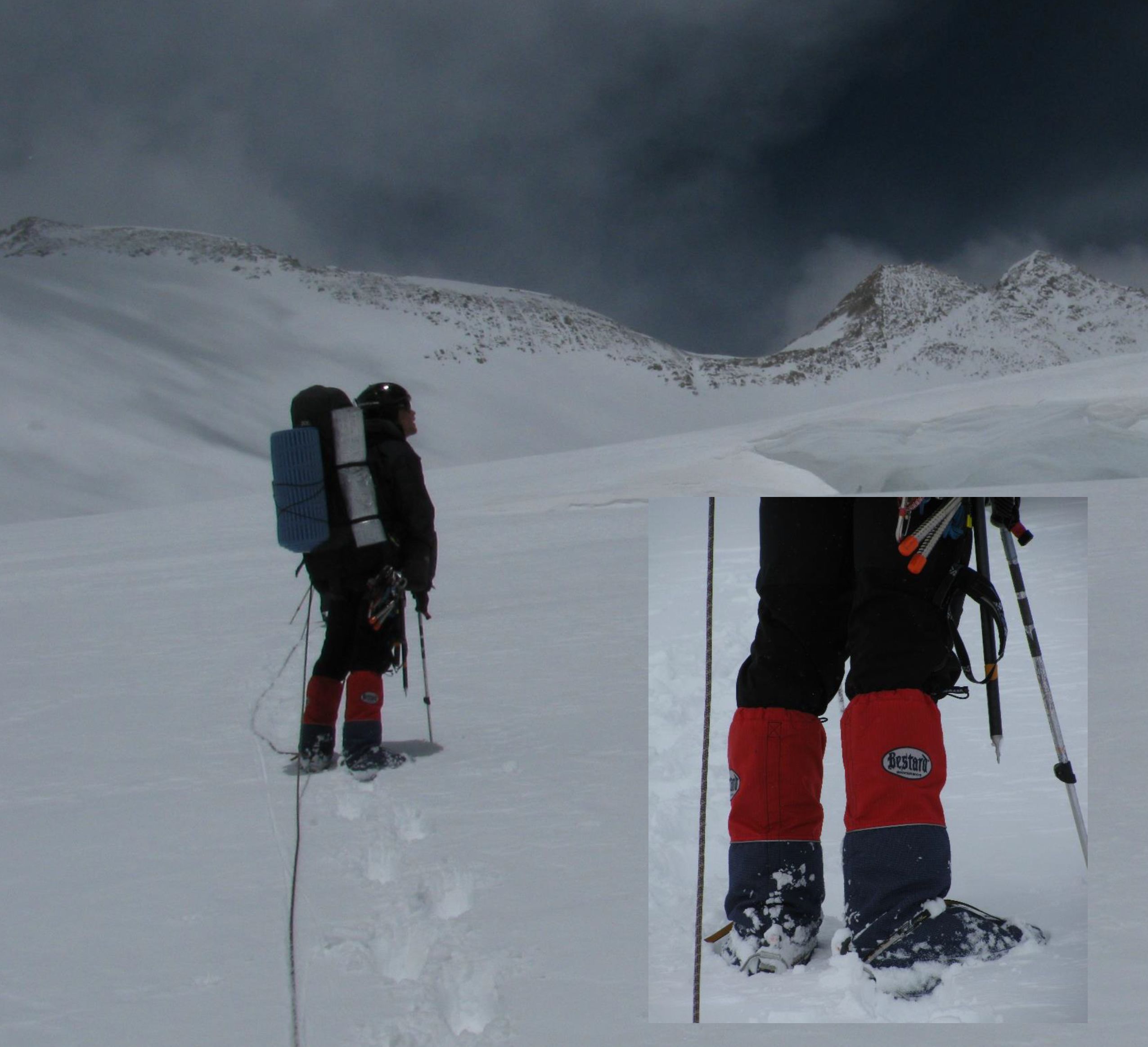Bruce Normand: 15 years of expeditions with Bestard boots
Bruce Normand: thoughts on 15 years of expeditions and exploration with Bestard boots
Texts and photos by Bruce Normand
If you ask me what I do in the big mountains, it is first exploring and then technical climbing. I am not a technical superstar climbing extremely hard or extremely fast, although I do like a real route with quality rock and ice when I find one. But finding one is often a tough process, that can require days of work crossing rough moraines and crevassed glaciers, and this needs a tough boot.

Bruce Normand modelling the Bestard TOP Extreme, early on day 2 on the N Face of Xuelian West (6422m) in the Chinese Tien Shan. For this route, the team of Normand, Jed Brown and Kyle Dempster was awarded the 2010 Piolet d’Or
My link with Bestard started in Tibet, when I was complaining to a friend about the imminent demise of another pair of non-Bestard boots that I’d just worn out. He put me in touch with Bestard HQ, who somehow decided that this stranger in the strange lands of western China might be worth supporting. My first Bestard boot – The Top Alpine Pro double-boot – just fit. I put my foot in it and off I went. I didn’t have to engineer anything – no problem with width, with length, with arch, with laces, with inner and outer boot, nothing. Maybe I have totally average feet, but then everybody else says the same … just no-fuss comfort so you can get out and focus on trekking or climbing.

Boot testing as the weather closes in, first ascent of Cogar Lapka (6509m) in the Kawagebo Range, in southwestern China where Yunnan meets Tibet.
The Bestard Top Extreme Lite double boots (TEL from now on), the successor of my first Top Alpine Pro, are ideal for what I do. They are actually not extreme enough for 8000m, and not expensive enough either for the people who like to do that. But there’s almost nothing new and logical (safe, aesthetic, interesting) to do on the 8000m peaks. The world’s unclimbed mountains are mostly 6000m high, with a few remaining low 7000ers, and these are exactly the altitudes where you want a TEL, especially in the regions where the weather is only dry in the cold half of the year. These mountains are not at the road end, and nor are they in the shadow of an 8000er with all the attendant infrastructure, so you need mountain boots that are also cut out for those rough approaches – the TEL.
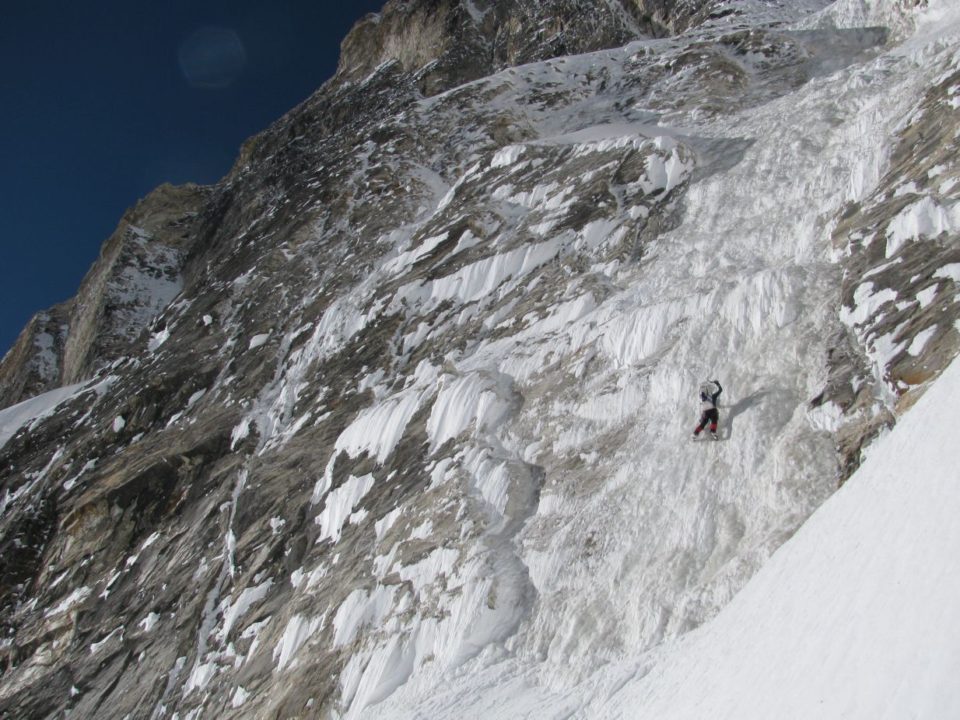
Bruce Normand leading the approach pitches on day 4 on E Face of Mt Edgar. This route, climbed with Kyle Dempster, was nominated for the 2011 Piolet d’Or
Although Tibet was closed after only one Bestard trip there, climbing new summits in the West Nyanchentangla, I had better results in the Tien Shan. One exploration trip to Xuelian was enough to find a hard and supremely aesthetic route that we climbed on my second visit, being award a Piolet d’Or for the line. I was in Xinjiang one more time before the politics caught up there too, but the crux of the northern Karakoram is what you do without your boots – wading up slot canyons because there is no other access. Since then, Bestard has always become a major player in canyoneering boots, and if the region ever opens again I will make use of that.

Winter waterfall ice-climbing in Shuangqiaogou in Sichuan, southwest China
Southwestern China – Sichuan and Yunnan – is a region you need to visit in winter, because the monsoon is long and wet. Approaches are hard and the winter weather harder, but again tough, warm boots and a sufficiently stubborn mindset (sometimes you have to visit 2 or even 3 times) got us some interesting and challenging summits, not least Mt Edgar and Cogar Lapka. As China has closed down, I’ve become a regular visitor to Nepal again, where the post-monsoon weather feels like a holiday camp by comparison. Still the unclimbed peaks and new routes are far from the beaten track, and my boots have had to take me deep into the upper Khumbu, upper Langtang, Damodar, Nalakankar. Kanti or Changla. These last three ranges are in “far western” Nepal, somewhere beyond Mustang and the Dolpo, and harbour another 50+ unclimbed 6000ers at all grades of difficulty.
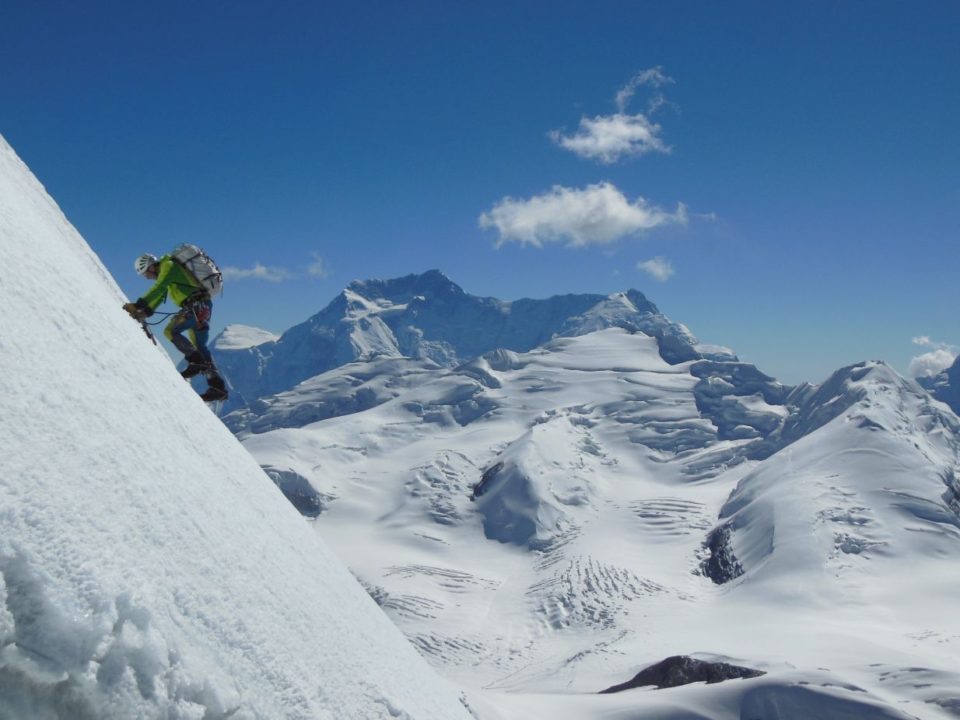
Exploring 6000m peaks in the Damodar Himal, north of the Annapurnas in Nepal.
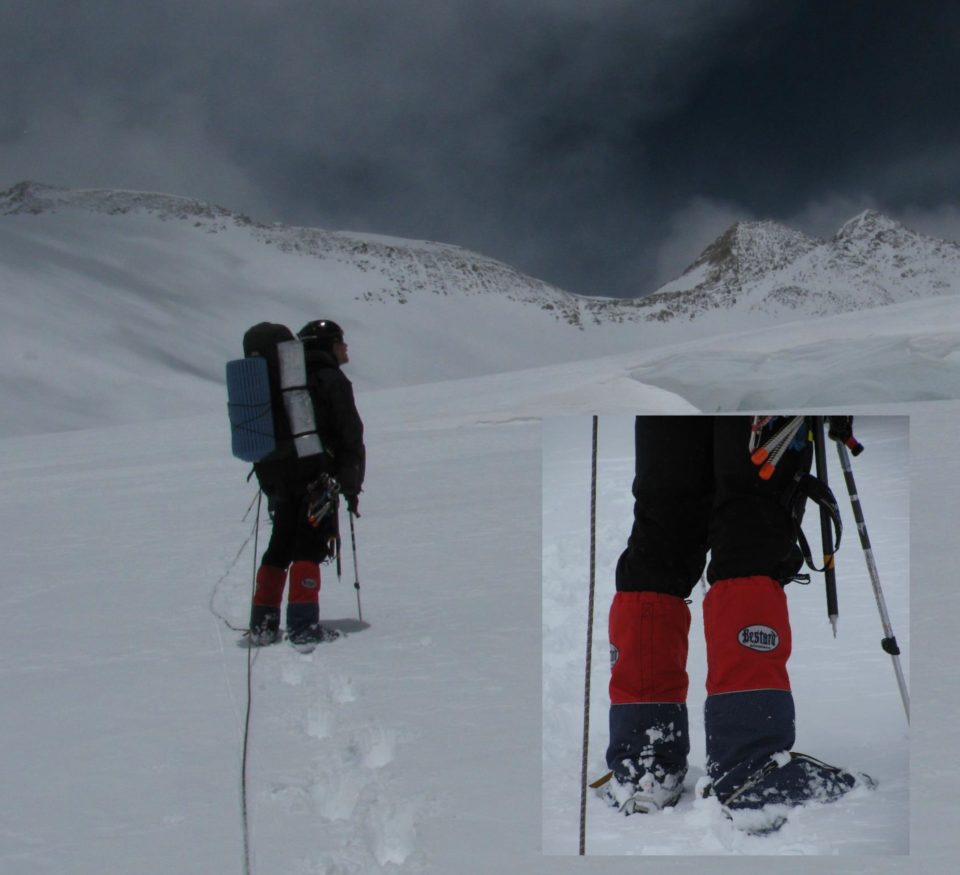
Bestard boots and supergaiters at 7100m between Gasherbrum III and Gasherbrum IV in the heart of the Karakoram.
The Karakoram occupies a special place of combined love and hatred in the minds of mountaineers. Everything there is more extreme, from the size of the glaciers to the difficulty of the steep rock to the objective dangers from falling stones, seracs and avalanches. Here the high 7000ers still offer a plethora of new routes. However, apart from K2, almost everything I have ever tried there didn’t work out well. I would love to spread the blame around a bit more, but I can not say that my boots ever did anything other than exactly what I asked of them – from long moraine slogs or knee-deep glacier crossings to delicate mixed climbing on the N Face of the Ogre or indelicate post-holing at 7500m under Gasherbrum 3, the boots were always ready for the situation, just perhaps not the climber. Here I should say that there have been plenty of low-6000m “consolation prizes” during all these unsuccessful efforts, and the new vistas and ideas they offer are what always make me come back for more punishment. At least I can be sure that my feet will not be punished.
- Bruce Normand enjoying breakfast in the sun at the shaky spindrift bivouac, on the morning of day 3 on the N Face of Xuelian West (6422m)
- Bruce Normand approaching the N Face of Xuelian West (6422m), also known to the Chinese as Baiyu Feng (White Jade Peak). The team’s route followed both sides of the buttress forming the sun-shadow line before reaching the upper couloir at 2/3 height.
- Bruce Normand descending Hanjaylak II (5380m) after the first ascent, made during the 2008 reconnaissance of the northern side of the Xuelian subrange of the Tien Shan. In the background is Hanjaylak I (5424m), which the team had climbed the previous day.
During all these expeditions I have had the pleasure of “testing” multiple pairs of Bestard approach shoes, and between them I use the Climbing Guide FF as an excellent lightweight summer mountaineering boot for places like the Alps. The results are always the same: insert foot, go. The fit feels good and the shoe delivers exactly what it says on the packet – the weight, the stiffness and the lacing options are exactly what you need to get the job done, there’s nothing you don’t need, the durability is high and the price point is low.
After 15 years of this experience I have no hesitation in recommending Bestard boots to anybody
Bruce Normand
Dr. Bruce Normand is a Scottish theoretical physicist and alpinist who is resident in Switzerland. His long list of explorations and ascents, rewarded with two nominations for the Piolet d’Or, reflects a passion for first ascents in remote areas and technically demanding new routes, always made in alpine style. Bruce is a member of the venerable Academic Alpine Club of Zurich (AACZ) and of the British Mountaineering Council (BMC). He has been a member of the Bestard Test Team since 2008.
